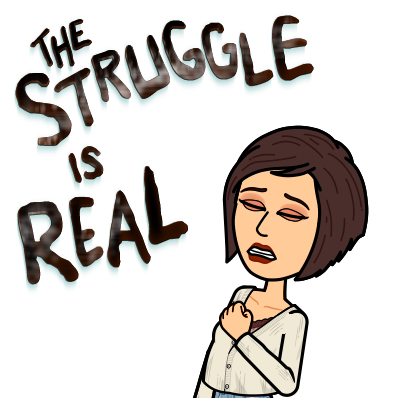Add to that, new curriculum. Curriculum that has been riddled with issues, promises that have yet to be fulfilled, and not quite the fun and interesting material that was shown. A curriculum that has seemed to move me, specifically, from a student centered classroom back to teacher centered. AND I have to follow the curriculum to a T-so to speak. Can not add additional projects, supplemental material, and ONLY two novels-when we usually do three or four.
Needless to say....

My students are wonderful and fun to teach. But I feel like I am missing. New curriculum can be difficult. Especially when you teach in such a way to have students dive into the material and not so much teacher directed. It's almost like I have taken steps backward.
So what to do?
I continue to add STEAM and activities to boost the new curriculum. I still use the tools in my teacher tool box to engage, encourage, and stimulate students to tackle their learning. I refuse to give certain things up-especially when it benefits students.
Reflecting on my first quarter, I wish I would have done more, but I did manage to squeeze in some fun in the form of STEAM. The DuckPond was reading a short story called "The Rogue Wave". It was fine. I did this story as a flipped lesson by recording myself reading the story in parts. I put each in Edpuzzle and students listened, followed along, and answered comprehension questions so that in class the next day, we could discuss and make real world applications.
One thing I noticed is that students didn't "get" just how big this rogue wave in our story was. Sure, they understood the struggle the characters had in their attempts to survive. But understanding the shear size of the wave was tough. Sure, I could have shown a video or pictures of rogue waves, but even then...
One night, I woke up thinking SPHEROS!! Yep, Spheros were the answer to my rogue wave issue.
I gave students an extra credit opportunity to do some math for ELA. My sneaky way to prep students for the two days of robotics. I had students look at the size of the rogue wave and the schooner, then scale them to the size of the Sphero . The next day in class, students worked in groups to scale the wave to Sphero (if they did extra credit, they ZOOMED through this part) then they got to "test drive" the Spheros and then finally try to capsize the Sphero on the scaled version of the wave.
This. Worked.
After students came in from driving the Spheros and saw the size of the wave to the robot.... they got just how MONSTEROUS the wave in our story was. Students then could write (back to English here!) how the Spheros connected to the story and how they would feel if they were one of the characters in the story.
Writing about how they would feel as a character without truly grasping the size of the wave would have been worthless without adding some STEAM. Was it outside the box? Yes. Did it connect students to the reading? Yes. Was it fun, err, I mean engaging. MOST definitely. PLUS, students practiced some math, some coding, as well as English.

I think this simply shows, that even when we are incorporating new curriculum, ideas, etc. we can still use those tools that help students take the material further. We can still be engaging, student centered, and meet the needs of our students and district.
And special thanks to CUE SteamPunk, I would not have thought of robotics in my ELA class without being able to experiment with robots through their program. CHECK THEM OUT!
And special thanks to CUE SteamPunk, I would not have thought of robotics in my ELA class without being able to experiment with robots through their program. CHECK THEM OUT!
 |
| Attempting to capsize the S |
 |













